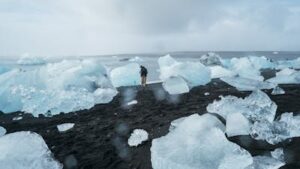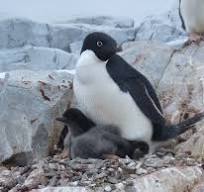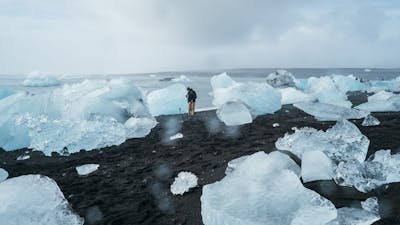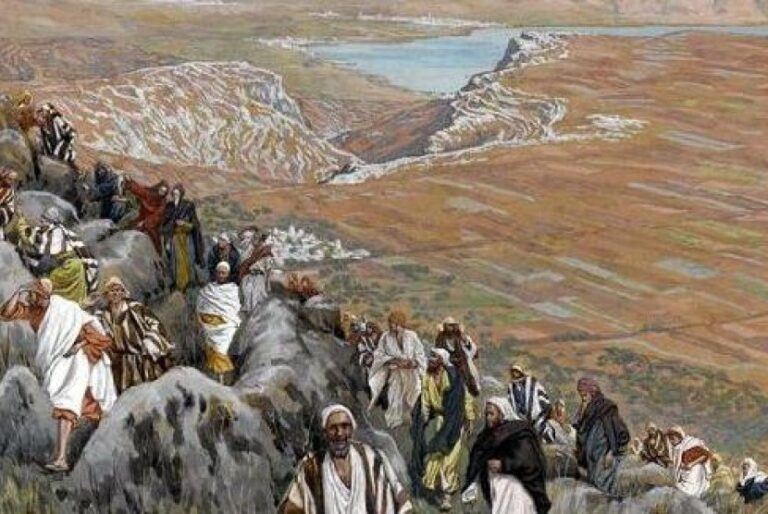The Effects of Climate Change in 2025: The Looming Catastrophe for The World
UN Secretary-General Antonio Guterres’ statement at the World Environment Summit in Birmingham highlighted the urgency of addressing climate change. Rapid temperature changes and extreme weather underscore the need for immediate and sustained action.https://mrpo.pk/deforestation/
We Have Long Mistreated the Earth, and Now the Earth is Taking Its Revenge by Drowning Us or Leaving Us Thirsty. This is Not Just a Coincidence of the Past or Present Year.

The news from five years ago about ancient ice-covered rocks being exposed in Antarctica due to rising temperatures is a stark reminder of the rapid changes our planet is undergoing. This phenomenon is a direct consequence of the effects of climate change, which has been accelerating due to human activities.
Climate Change: Context and Significance
- Rising Temperatures: Antarctica, one of the coldest places on Earth, has been experiencing unprecedented warming. In February 2020, the continent recorded its highest temperature of 20.75°C1. This is alarming because such temperatures are far above the historical averages for the region.
- Melting Ice and Exposed Rocks: As temperatures rise, ice sheets and glaciers in Antarctica are
 melting at an accelerated rate. This melting exposes rocks and other geological features that have been covered for millions of years. These rocks can provide valuable information about Earth’s climatic past, but their exposure also signifies the loss of ice that contributes to rising sea levels2.
melting at an accelerated rate. This melting exposes rocks and other geological features that have been covered for millions of years. These rocks can provide valuable information about Earth’s climatic past, but their exposure also signifies the loss of ice that contributes to rising sea levels2. - Impact on Global Sea Levels: The melting of Antarctic ice contributes significantly to global sea level rise. If the entire Antarctic ice sheet were to melt, it could raise sea levels by about 58 meters (190 feet), which would have catastrophic effects on coastal communities worldwide3.
- Ecosystem Disruption: The warming temperatures and melting ice are also disrupting local ecosystems. Species that are adapted to cold environments are struggling to survive, and changes in ice cover affect the availability of habitats for wildlife such as penguins and seals4.
Broader Implications
- Climate Feedback Loops: The melting of ice in Antarctica can lead to feedback loops that exacerbate global warming. For example, ice reflects sunlight, helping to keep the planet cool. As ice melts, darker ocean water is exposed, which absorbs more heat and accelerates warming5.
- Historical Climate Data: The exposed rocks and ice cores from Antarctica provide scientists with crucial data about past climate conditions. By studying these, researchers can better understand the natural variability of Earth’s climate and the extent of human impact.
Call to Action
The exposure of ancient ice-covered rocks in Antarctica is a clear signal that urgent action is needed to combat The Effects of Climate Change. Reducing greenhouse gas emissions, transitioning to renewable energy sources, and implementing sustainable practices are essential steps to mitigate further damage and protect our planet for future generations.
The melting ice in Antarctica has several far-reaching consequences beyond rising sea levels. Here are some key impacts:
- Loss of Habitat
- Wildlife: Species such as penguins, seals, and krill depend on the ice for breeding, feeding, and
 shelter. As the ice melts, their habitats are shrinking, leading to population declines and disruptions in the food chain.
shelter. As the ice melts, their habitats are shrinking, leading to population declines and disruptions in the food chain.
- Ocean Circulation Changes
- Thermohaline Circulation: The melting ice contributes fresh water to the oceans, which can disrupt the thermohaline circulation (the global ocean conveyor belt). This circulation is crucial for regulating global climate by distributing heat around the planet.
- Increased Coastal Erosion
- Coastal Areas: Rising sea levels lead to increased erosion of coastlines, which can result in the loss of land and damage to infrastructure. Coastal communities are particularly vulnerable to these changes.
- Release of Ancient Microbes
- Health Risks: Melting ice can release ancient microbes and viruses that have been trapped for thousands of years. These pathogens could pose new health risks to humans and wildlife.
- Impact on Global Weather Patterns
- Extreme Weather: Changes in the Antarctic ice can influence global weather patterns, potentially leading to more extreme weather events such as hurricanes, heat waves, and heavy rainfall.
- Economic Impacts
- Fishing and Tourism: The changes in marine ecosystems can affect fishing industries, while the loss of ice can impact tourism in regions that rely on their unique polar environments.
- Geopolitical Tensions
- Resource Access: As the ice melts, previously inaccessible areas may become available for resource extraction (e.g., oil, gas, minerals), leading to potential geopolitical tensions over these resources.
- Broader Implications
The melting of Antarctic ice is a clear indicator of the broader impacts of climate change. It underscores the need for global cooperation and urgent action to mitigate these effects and protect our planet.
Record-Breaking Heat in The US and Europe
Coastal Erosion Due to Rising Sea Levels is a Significant Issue Affecting Many Regions Around the World. Some Notable Examples:
United States
- Long Island, New York: Severe beach erosion has been observed, particularly after storms like nor’easters. These events can remove wide beaches and substantial dunes in a single event1.
- California: Coastal erosion is a persistent problem, with some areas losing more than six feet of shoreline annually. This erosion threatens homes, infrastructure, and natural habitats2.
Texas Drought
Current Situation
- Drought Extent: As of recent reports, 87% of Texas is experiencing moderate to extreme drought1. This widespread drought has significantly impacted water resources, agriculture, and ecosystems across the state.
- Historical Context: The current drought began in September 2021, driven by a La Niña climate pattern that resulted in drier and hotter conditions across the southern United States2. This pattern has persisted, leading to severe water shortages and environmental stress.
Dinosaur Footprints
- Discovery: The severe drought has caused rivers in central Texas to dry up, revealing 113-million-year-old dinosaur footprints in the bed of the Paluxy River at Dinosaur Valley State Park3. These footprints, which are usually submerged, provide a rare glimpse into the prehistoric past.
Broader Implications
Environmental Impact
- Water Resources: The drought has strained water supplies, affecting surface and groundwater resources. Reservoirs and rivers are critically low, impacting drinking water availability and agricultural irrigation1.
- Agriculture: Texas, a major agricultural state, has seen significant crop and livestock losses due to the lack of water. Farmers are facing challenges in sustaining their operations, leading to economic stress3.
Climate Change
- Long-Term Trends: The current drought is part of a broader trend of increasing frequency and severity of droughts, likely driven by climate change3. This trend poses significant risks to water resources, agriculture, and ecosystems, highlighting the need for comprehensive climate action.
Lake Mead Drought
- Water Levels: Lake Mead, the largest national artificial lake in the United States, is fed by the Colorado River and provides drinking water to approximately twenty million residents in Nevada, California, Arizona, and New Mexico2. The lake’s water levels have dropped to only 27% of its capacity due to prolonged drought and overuse2.
- Historical Low: The water level in Lake Mead has dropped around 170 feet since 2000, exposing large areas of the lakebed3. This has led to the discovery of several human remains, including bodies in barrels, believed to be victims of mafia activities from thirty to forty years ago3.
US: The megadrought in the western United States, including Lake Mead, is the worst in over a thousand years4. This has significant implications for water supply, agriculture, and hydroelectric power generation. Conservation efforts and policy changes are critical to address these challenges5
- Bondi Beach, Sydney: Wild swells and rising sea levels have caused significant erosion, sometimes making the beach disappear beneath the ocean. This has led to damage to infrastructure like wheelchair ramps and surf clubs3
- Portugal: In July, temperatures soared to 47°C (116.6°F), an unprecedented high1.
- London: The city experienced a record temperature of 41°C (105.8°F)2
- Netherlands: Temperatures reached 40°C (104°F), marking the hottest conditions ever recorded in these regions3.
- Danube River
- Origin and Course: The Danube is the second longest river in Europe, originating from the Black Forest in Germany and flowing through Austria, Slovakia, Hungary, Serbia, and Bulgaria before reaching Romania and emptying into the Black Sea. It spans approximately 2,850 kilometres (1,770 miles).
- Water Level Drop: In recent years, the water level in some parts of the Danube has dropped by up to fifteen feet due to prolonged droughts and heat waves. This has exposed the remains of more than two dozen German warships that were sunk during World War II to avoid capture by the Soviet Union.
- Temperature Rise: Last month, record heat caused the water temperature of the Danube in Bavaria, Germany, to rise to 25°C (77°F). This increase in temperature has led to a decrease in aquatic oxygen levels, putting species like trout and other aquatic life at risk.
Rhine River
- Origin and Course: The Rhine River starts in the Swiss Alps, touches Liechtenstein, enters Austria, and then flows through Germany, passing through France and the Netherlands, covering a journey of 1,230 kilometres (764 miles) before emptying into the North Sea.
- Water Shortage: Recently, the Rhine has experienced significant water shortages. A few weeks ago, it was deep enough for large ships carrying oil, gas, and coal to pass easily. However, the water shortage has now made it difficult even for small ships to navigate. The section of the Rhine that enters the Netherlands has been reduced to sediment, and even light houseboats are stuck in the mud.
Elbe River
- Historical Drought Markers: The Elbe River, which flows through Germany and Slovakia, has also been affected by drought. The receding banks have revealed centuries-old stones known as “hunger stones,” which were placed by ancestors to warn of drought. One of these stones, inscribed in 1616, reads: “When you see me, weep for your fate”.
Po River Drought
Severity of the Drought
- Historical Context: Northern Italy is experiencing its worst drought in seventy years. This drought has significantly impacted the Po River, the largest river in Italy, which flows from the Alps in the northwest to the Adriatic Sea in the southeast1.
- Water Level Drop: The water levels in the Po River have dropped drastically, with some areas seeing reductions of up to fifteen feet. This has exposed parts of the riverbed that have not been visible for decades1.
Impact on the River and Surrounding Areas
- Unexploded Bomb: The low water levels have revealed a 1,000-pound unexploded bomb from World War II, which was safely removed by authorities1.
- Agricultural Impact: The drought threatens more than 30% of Italy’s agricultural produce, as the Po Valley is a crucial agricultural region. The lack of water has severely affected crops and livestock1.
- Saltwater Intrusion: The reduced flow of the Po River has allowed seawater to seep upstream, further damaging crops and affecting freshwater supplies2.
Temperature and Ecological Effects
- Record Heat: Last month’s record heat caused the water temperature of the Po River in Bavaria, Germany, to rise to 25°C (77°F). This increase in temperature has led to a decrease in aquatic oxygen levels, putting species like trout and other aquatic life at risk1.
Broader Implications
- Climate Change: The drought in the Po River basin is part of a broader pattern of increasing frequency and severity of droughts, likely driven by climate change. This trend poses significant risks to water resources, agriculture, and ecosystems3.
- Emergency Measures: Italy has declared a state of emergency in five northern regions surrounding the Po River. Measures include water rationing and financial aid to support affected communities1.
France’s Nuclear Power and Water Challenges
Nuclear Power Dependency
- Electricity Generation: Approximately 70% of France’s electricity is generated from nuclear reactors1. This makes France one of the world’s most nuclear-dependent countries.
- Cooling Requirements: Most of these reactors are located near water bodies, such as rivers, to use the water for cooling the reactor cores. This is essential to prevent overheating and ensure safe operation.
Impact of High Water Temperatures
- Rhône and Garonne Rivers: Recently, the water temperatures of the Rhône and Garonne rivers have exceeded 25°C (77°F), reaching up to 28°C (82.4°F) in some instances12. This high temperature makes the water unsuitable for cooling purposes, as it could lead to environmental damage when discharged back into the rivers.
- Reduced Output: As a result, Électricité de France (EDF) has had to reduce power production at several nuclear plants, including the Golfech plant, to comply with environmental regulations12.
Loire River
- Water Level Drop: The water level in the Loire River has dropped significantly due to prolonged drought. In some areas, the river has become so shallow that people can cross it on foot instead of using bridges3.
Spain’s Severe Drought
Water Shortages
- River Water Decrease: In Spain, the amount of river water has decreased to about 40% of its usual levels4. This drastic reduction is due to prolonged drought conditions affecting the entire region.
- Drought Emergency: The northeastern region of Catalonia has declared a drought emergency. Reservoirs serving around 6 million people, including Barcelona, are at historic lows, with capacities under 16%4.
Drinking Water Rationing
- Rationing Measures: Due to the severe drought, many villages in northern Spain have had to ration drinking water. Daily water allowances have been limited to 200 liters (53 gallons) per person4.
- Impact on Communities: Small towns and villages, particularly those relying on wells, are facing significant challenges in accessing potable water. Residents often have to travel to other towns to obtain bottled water4.
Thames River Drought
Current Situation
- Drought Impact: The Thames River, which starts in Gloucestershire County and flows through London before emptying into the English Channel, has been severely affected by drought. For the past one and a half months, the river has struggled with extremely low water levels1.
- Source Drying Up: The source of the Thames has moved east from Kemble, Gloucestershire, to beyond Somerford Keynes due to the prolonged dry weather and record-breaking temperatures. This unprecedented incident has left parts of the riverbed dry and devoid of aquatic life for up to 10 miles1.
Broader Implications
Climate Change and Water Management
- UK: The drought in the Thames River is a stark warning of the impacts of climate change. Experts emphasize the need for better water management practices, including accelerated metering, reduction in leakage, and sustainable drainage solutions1.
Conclusion
The severe drought conditions affecting the Thames River in the UK and Lake Mead in the US highlight the urgent need for comprehensive climate action and sustainable water management practices. These challenges underscore the importance of adapting infrastructure and policies to cope with the increasing frequency and severity of extreme weather events.
Sources:
1: National Geographic 2: Phys.org 3: NASA Climate 4: Smithsonian Magazine 5: The Conversation : University of Arizona
1: U.S. Climate Resilience Toolkit 2: U.S. Geological Survey 5: NRDC 3: ABC News 4: The Conversation
2: UNFCCC 3: UNFCCC 1: United Nations 4: UN News
1: PMI 2: Green Coast,
1: Independent 2: France24 3: BBC
1: ANS 2: Energy Live News 3: Telegraph 4: AP News
5: E&E News 3: CNN 4: PBS News 2: CBS News 1: BBC News
1: Drought.gov 3: Texas Tribune 2: Texas Water Newsroom
If you enjoyed this article, please like and share it with your friends, and don’t forget to subscribe for more great content!
BRICS:The Unparalleled Challenges for The US and European Alliance in 2024


